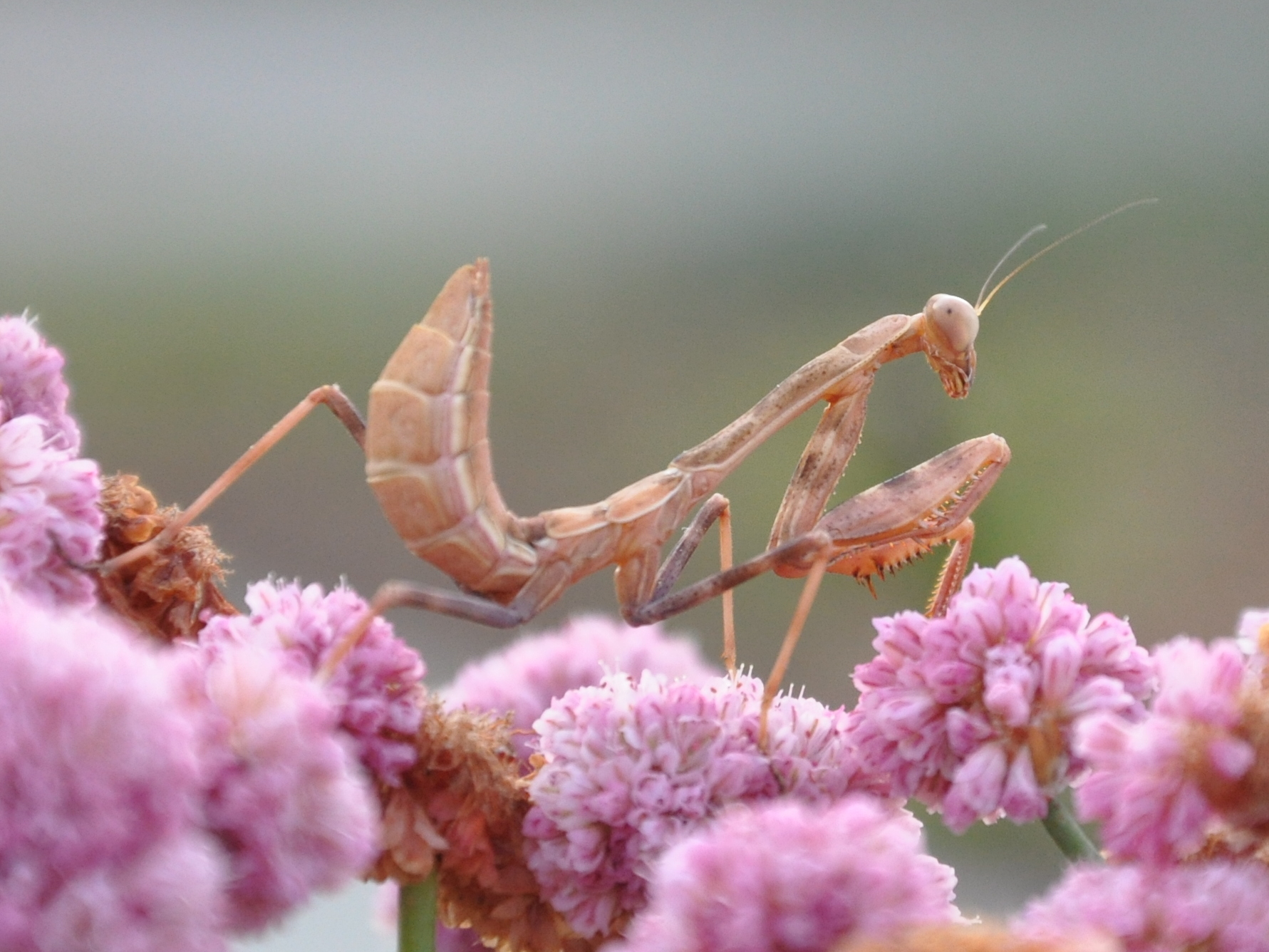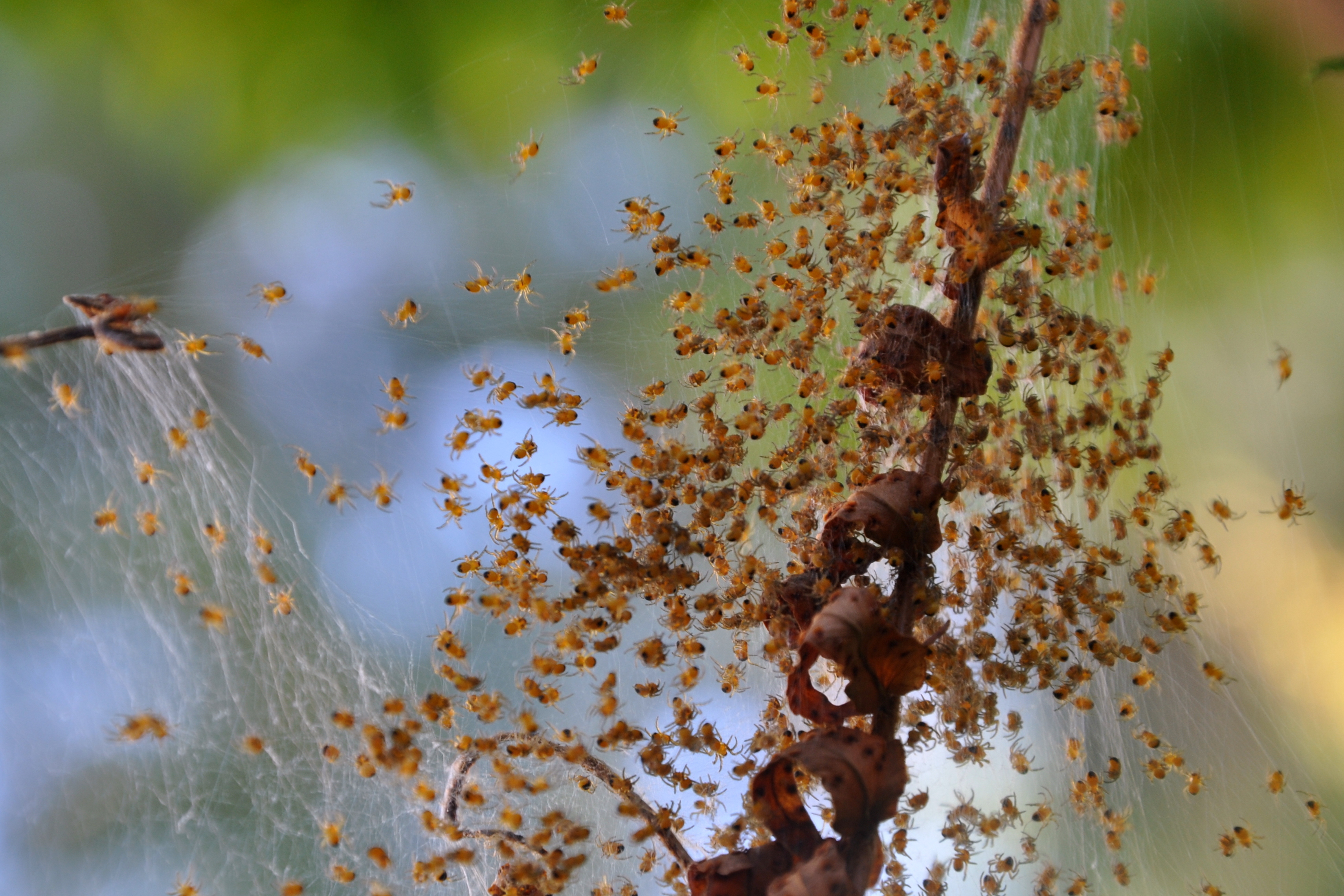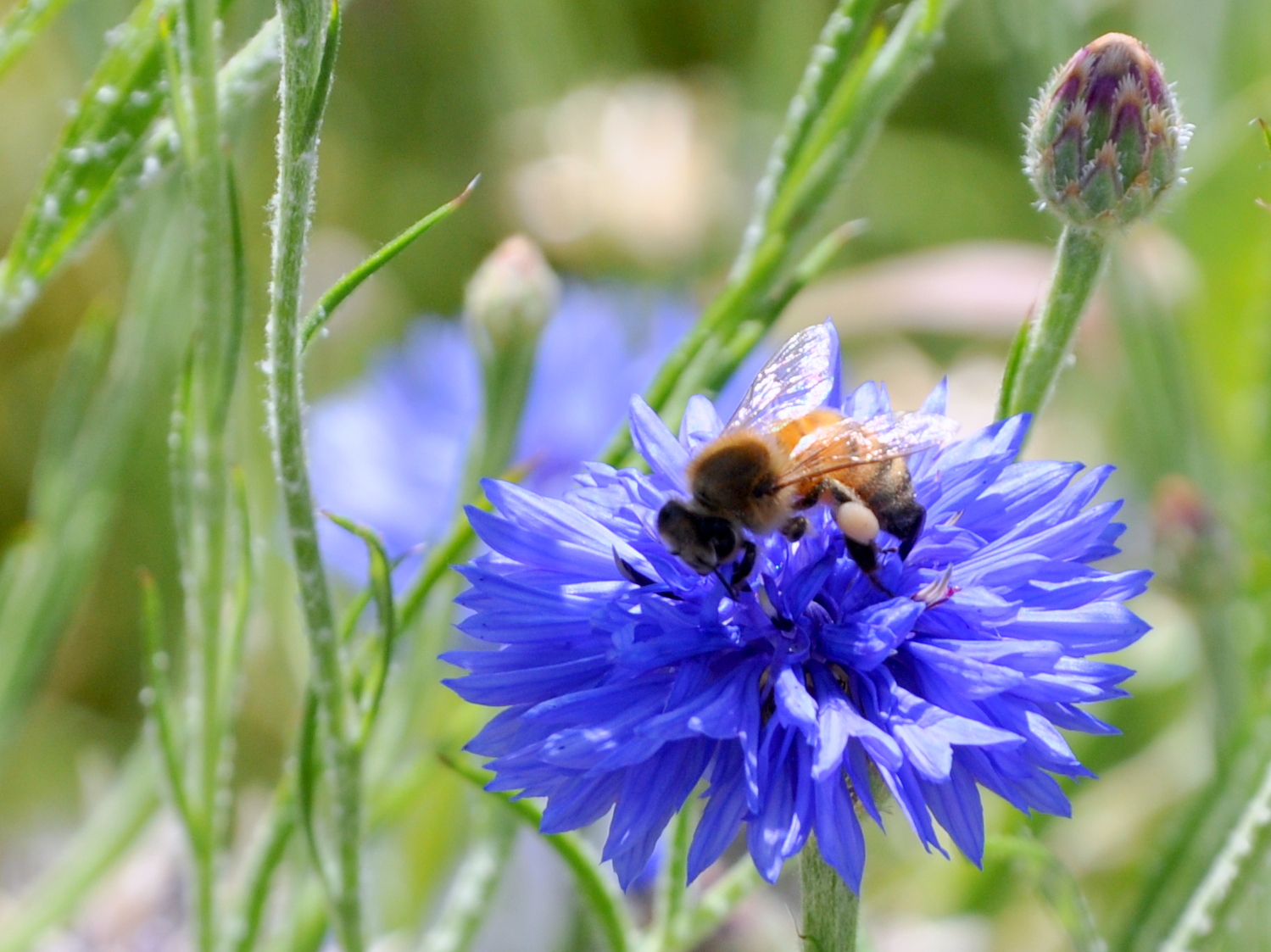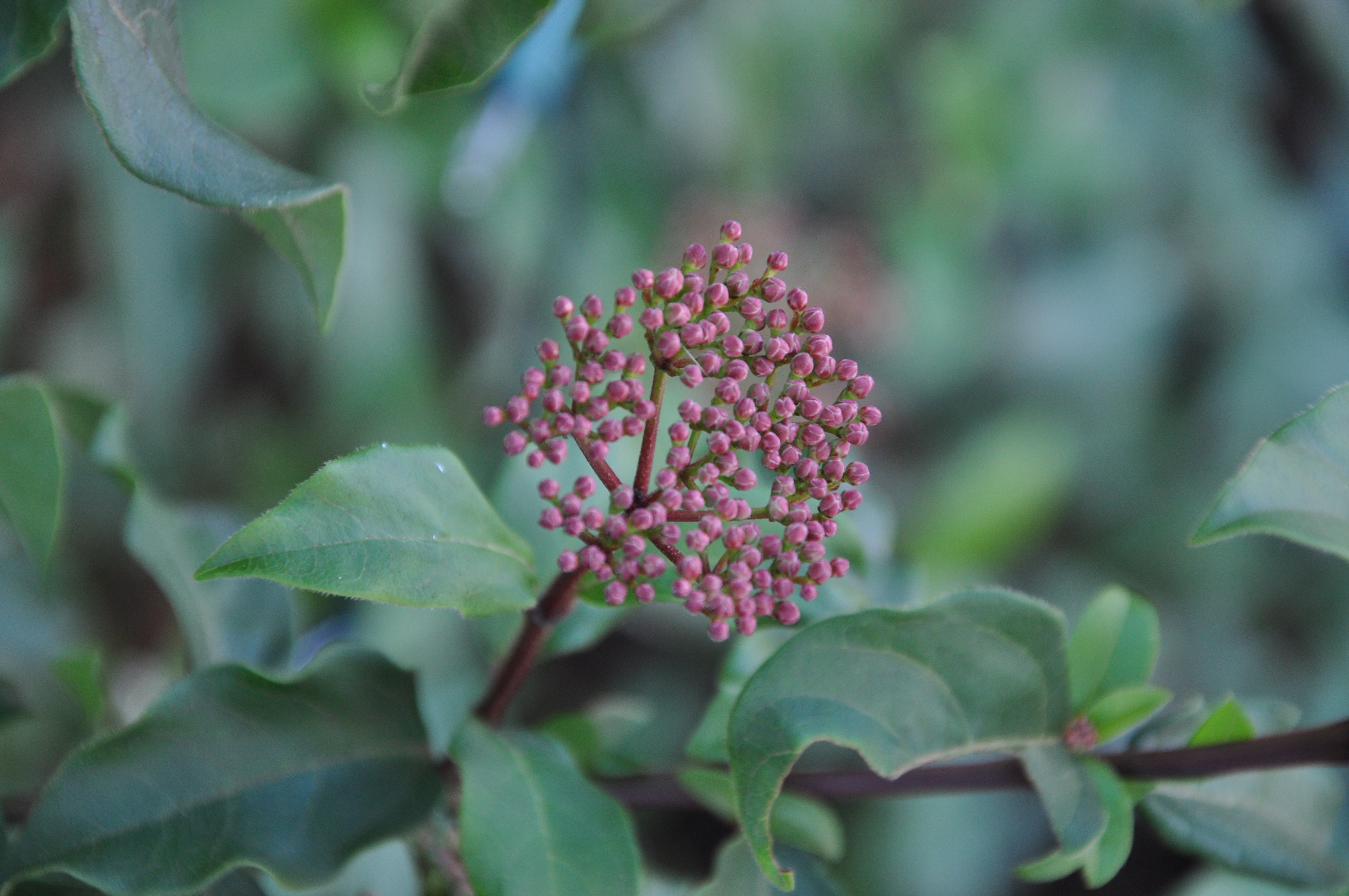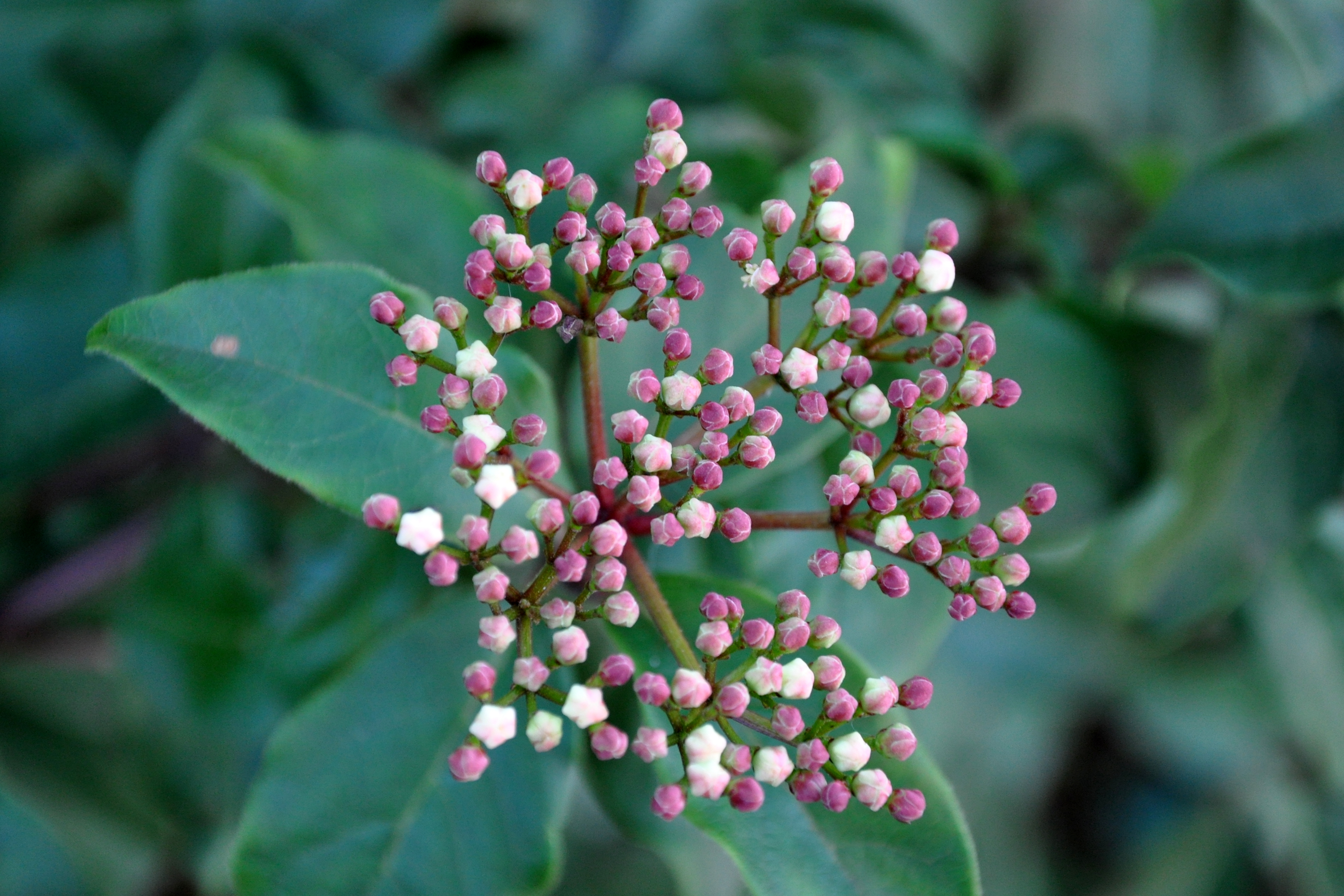While prowling the garden on Monday looking for vase material, I spotted a Katydid. They camouflage beautifully, so I’m surprised when I spot one. The sunlight must have highlighted the antennae.

Look closely at the leaf on the right. Below is a closeup.

Occasionally I snap a photo and later discover an insect in the periphery. It’s a reminder that gardens support nature and, in turn, nature keeps things humming. Beneficial insects control the less desirable ones, and lizards, spiders, and opossums do the same.
Last night Mike stepped out to look for Tessa and nearly face-planted an orb weaver. The imposing spider spun her web from the edges of our patio umbrella to a nearby shrub and awaited her evening meal. When I checked this morning, our nocturnal arachnid had packed up shop and stored her things for the day.
My father taught me to honor spiders and bees at a young age. Years later, a friend and volunteer at the boy’s school garden shared the benefits of mantises to a garden ecosystem. I spotted a brown mantis near our compost bin while pruning a shrub last week and thought of Donna. The praying mantis crawled onto my gloved hand, and I pulled out my phone for a pic before it ventured off. It’s a bit blurry, but I had to act quickly.

When life gets you down, it helps to focus on gratitude. Today I’m grateful for a garden teaming with life, seen and unseen, all working in harmony to sustain this beautiful planet.
